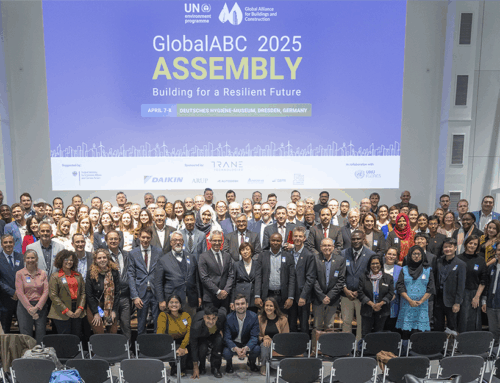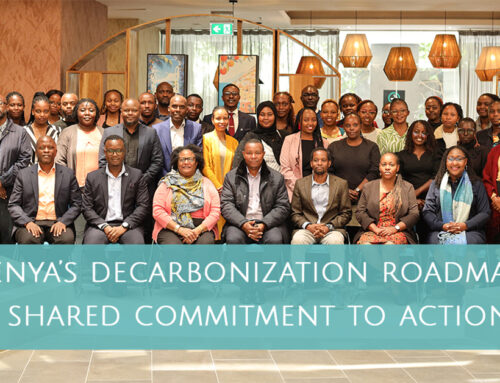[Report] A Comparative Analysis of Best Practice Renovation Policies from Europe and the United States
To provide insight into how to accelerate more and deeper renovation policies, the GBPN recently launched an on-line Policy Tool for Renovation that captures the performance of the current best practices in Europe and in the United States and enables their comparison. The new paper Reducing Energy Demand in Existing Buildings: Learning from Best Practice Renovation Policies details the methodology behind the work and highlights how a package of complementary policies can help policy makers embark on highly ambitious renovation strategies.
Methodology:
With the support of a panel of international experts in the field, the GBPN identified fourteen criteria that define the key elements of a state-of-the-art policy package and scored the selected twelve best practice policy packages against these:

Best practice policy packages were selected from the European Union (E.U.) and the United States (U.S.) due to the large existing building stock, slow replacement rates and the more advanced experience in renovation policy in both regions. To be selected, policy packages had to comprise elements of best practice or to have proved a reduction in residential energy consumption, between 2000 and 2012.Selected jurisdictions in Europe include Denmark, France, Germany, the Netherlands, Sweden and the United Kingdom. Chosen jurisdictions in the U.S. include: California, Massachusetts, New Jersey, New York, Oregon and Vermont. Brief overviews of the renovation strategies per selected jurisdiction are available here.
A number of key findings have emerged from the research:
- Energy renovation policy is an emerging field and there is scope for further progress. The tool shows elements where positive steps have been taken and where countries and states can learn from these actions.
- The countries and states that were successful in reducing all consumption indicators were found to have holistic policy packages in place that address all aspects of the renovation process.
- There is no such thing as an overall “best” policy package and all countries and states can benefit from best practice sharing.
- Financial mechanisms need to be locally adapted and linked to broader national renovation strategies. National incentives and taxation mechanisms are widely used in the European countries whereas utility-funded and market based mechanisms are used in American states.
- Among the current best practice renovation policies, there is a general absence of clear and ambitious targets for the renovation of the existing building stock.
Documents
![]() 08. Renovation Tool Report.pdf
08. Renovation Tool Report.pdf![]() 03.Renovation Tool_ES.pdf
03.Renovation Tool_ES.pdf ![]() 02. RT_Briefing.pdf
02. RT_Briefing.pdf ![]() 06. CS1-DENMARK 1.pdf
06. CS1-DENMARK 1.pdf ![]() 06. CS2-FRANCE.pdf
06. CS2-FRANCE.pdf![]() 06. CS3_GERMANY.pdf
06. CS3_GERMANY.pdf ![]() 06. CS4 THENETHERLANDS.pdf
06. CS4 THENETHERLANDS.pdf ![]() 06. CS5 SWEDEN.pdf
06. CS5 SWEDEN.pdf ![]() 06. CS6 UNITEDKINGDOM.pdf
06. CS6 UNITEDKINGDOM.pdf ![]() 06. CS7 CALIFORNIA.pdf
06. CS7 CALIFORNIA.pdf ![]() 06. CS8 MASSACHUSETTS.pdf
06. CS8 MASSACHUSETTS.pdf ![]() 06. CS9 NEWJERSEY.pdf
06. CS9 NEWJERSEY.pdf ![]() 06. CS10 NEWYORK.pdf
06. CS10 NEWYORK.pdf![]() 06. CS11 OREGON_0
06. CS11 OREGON_0![]() 06. CS12 VERMONT.pdf
06. CS12 VERMONT.pdf
Related News
- [Event] New Webinar Series – How To Save Energy Using Renovation Policy Measures
- [Event] Webinar “Front-Runners in Energy Renovation Policies: What can we Learn from Them?”
- [Event] Webinar: The Role of Energy Saving Targets and Regulatory Measures in Renovation Policy Packages – Key Lessons from Global Best Practices
Related Report Bundles
- Reducing Energy Demand in Existing Buildings: Learning from Best Practice Renovation Policies
- 减少既有建筑的能源需求:从最佳改造政策中学习
- Deep Building Renovation – International Policy Guidelines
Related Blogs
Share This Story, Choose Your Platform!
Stay in touch with how we’re transforming the buildings sector
GBPN runs innovative building policy reform programs in key regions around the world that aim to tackle the climate emergency by decarbonising the buildings sector. Stay up to date with our newsletter.
Stay in touch with how we’re transforming the buildings sector
GBPN runs innovative building policy reform programs in key regions around the world that aim to tackle the climate emergency by decarbonising the buildings sector. Stay up to date with our newsletter.







